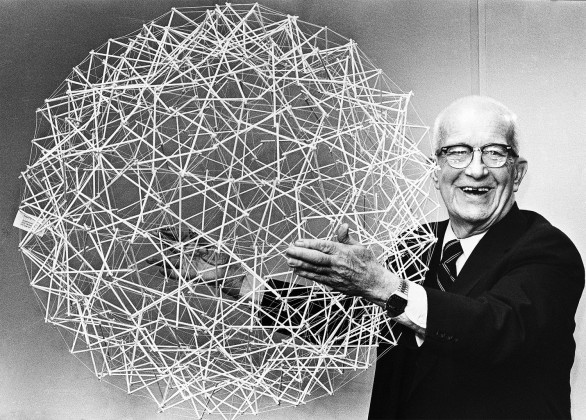Design Displacements
Design moralizes. I suggest a new and wanted future, a specific form of progress and subject, and usually calls this “good.” Even illegal forms of design, such as file-sharing, calls upon a virtue of shared “justice” or the liberation of data as “information wants to be free.” And even as it does not actually do anything, design sells itself being a “good” facilitator or asking the “right” questions.
These concepts veil many things, but I want to highlight two: a wanted and an unwanted future. It can be exemplified in the famous quote from Buckminster Fuller: “You never change things by fighting the existing reality. To change something, build a new model that makes the existing model obsolete.”
Many designers would agree with Fuller’s quote as they may feel their practice is a constructive one, creating new realities, rather than fighting old existing ones. The tricky question is the second part; what exactly “makes the existing model obsolete?” That is, how do our models not only end up in an affirmative and accumulative market of ideas where people will pick, choose, and add stuff but actually make models that will actively displace the old reality and make it obsolete?
If we look around, “disruptive” models are all the rage, and we can witness them replacing old ones. But they often seem driven by big money and power. An example may be the current struggle between Uber and old technology taxis. Sadly, and in opposition to Fuller’s ideas, there are today few examples of poor, powerless, but “good” solutions, which have actively replaced entrenched and powerful existing realities. Ethics and design rarely make an existing model obsolete, it is the power that does so.
As designers now grapple with replacing an unsustainable reality with a more sustainable one, we must ask if is it enough to “do no harm” in order to replace the existing model. Of course, we want to minimize unsustainable systems and reduce the footprints of carbon and corruption. But will it be enough to replace the existing reality by simply creating a process with zero bad-emissions? Or to put it more poignantly, how are designers to deal with violent realities, that is, not only bad solutions and unsustainable stuff, but take on forces that upholds an oppressive reality which actively undermines the abilities to replace this with the better model?
Designers are usually naïve. Just think of an everyday design case, a new “good” model is presented. We compare with competing models, look at improvements, strengths, opportunities and drawbacks; we usually don’t think of opposition and repression. But perhaps we should add another layer to our evaluation: how does our new model actively make an unsustainable model obsolete? How does it not only “do less harm” but add leverage against the unwanted model?
We are taught to think of the situation within a framework of functional or economic competition. But it may be more efficient to think of it in terms of nonviolence. To Gandhi, effective nonviolence displaces violence, it is not a negation, but a force deposing violence. Nonviolence is not passive but active. Nonviolence replaces violence with peace. Peace is a process, an activity, not a stable or tranquil state.
Peace needs more work. If we look around, most of our designs are drawn into social and political processes that are not pointing towards better future. So much of what we do under the banner of “progress”, “development”, or “aid”, is turned back on people and planet in violent ways. Learning from the active force of nonviolence, we could start to think of design as not merely an additional market offer, but a force that actively displaces unsustainable models, not only replacing them with a new choice but also making violent ones incompatible and even impossible.
Design is not only a matter of sustainability but a matter of peace. We must tackle the question seriously: How do we add leverage to peace in order to displace violence? We can follow Buckminster Fuller to think more actively about how designs make violent realities obsolete, designs that;
- cuts off ties to the unwanted reality,
- isolates the unwanted reality,
- makes itself independent from the networks of the unwanted reality,
- removes the unwanted reality,
- synergizes the wanted forces at the cost of the unwanted reality.
- (finally: add a better model which displaces mine)
Related Content:
-

Field House
-

Sana Frini & Philippe Rahm: Curators of the 2025 Versailles Architecture Biennale
-

Story Mine
-

CLT House
-

Tree House
-

NEST
-
Future Vision for a Healthier Greener City
After the meeting held as part of the Archi Design Timber Talks Series on November 1, 2021, at Bahçeşehir University Faculty of Architecture and Design, Kevin P. Flanagan, the guest of the event, answered the questions of Demet Sürücü and Melek Elif Somer about the role of wooden structures in the future of cities.
-

A Refuge in Córdoba
 03.10.2017
03.10.2017











